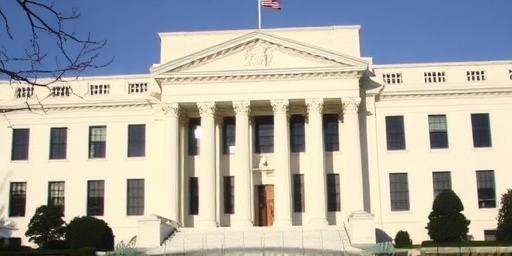In a pivotal address that sent ripples through global financial markets, Federal Reserve Chair Jerome Powell indicated that the central bank is seriously considering an interest rate cut as early as December, buoyed by recent data showing inflation cooling to 2.5%. This potential rate cut comes after a prolonged campaign to combat soaring prices, with the Fed’s benchmark interest rates held steady at 5.25% to 5.50% since July 2023. Powell’s comments, delivered during a speech at the Economic Club of New York, emphasized the economy’s resilience and the progress made in taming inflation, which has eased from a peak of 9.1% in June 2022.
- Powell’s Cautious Optimism on Inflation’s Downward Trajectory
- Market Rally Fueled by Expectations of Fed Rate Cut
- Economic Data Backing the Case for a December Interest Rate Adjustment
- Implications of Fed’s Potential Rate Cut for Consumers and Businesses
- Looking Ahead: Fed’s Path and Global Economic Ripples
The announcement triggered an immediate positive reaction in bond markets, with 10-year Treasury yields dipping slightly to around 4.1%, reflecting investor bets on looser monetary policy. Stock indices like the S&P 500 and Dow Jones also climbed, gaining over 1% in afternoon trading, as traders interpreted the Fed’s signals as a green light for economic soft landing.
Powell’s Cautious Optimism on Inflation’s Downward Trajectory
Federal Reserve Chair Jerome Powell’s latest remarks painted a picture of measured hope regarding the battle against inflation. Speaking to economists and policymakers, Powell noted that core personal consumption expenditures (PCE) inflation, the Fed’s preferred gauge, has moderated to 2.5% year-over-year in October, inching closer to the central bank’s long-standing 2% target. ‘We are seeing inflation move sustainably toward our goal,’ Powell stated, adding that this progress has been achieved without tipping the economy into recession—a scenario many feared during the aggressive rate-hiking cycle.
This cooling in inflation isn’t happening in a vacuum. Recent Bureau of Labor Statistics data revealed that consumer prices rose by just 0.2% in September, the smallest monthly increase since early 2021. Factors contributing to this trend include easing supply chain disruptions, a softening labor market with unemployment ticking up to 4.1%, and declining energy prices amid stable geopolitical conditions. Powell highlighted these elements, underscoring that the Fed’s data-dependent approach would guide any decisions on interest rates.
However, Powell tempered expectations by warning of potential headwinds. ‘Risks to inflation remain, particularly from wage pressures and housing costs,’ he said. The Fed’s dual mandate of maximum employment and price stability means that while inflation is cooling, the central bank must balance avoiding over-tightening that could stifle growth. This nuanced stance reflects the Fed’s evolution from the hawkish rhetoric of 2022, when officials were laser-focused on crushing inflation at any cost.
Market Rally Fueled by Expectations of Fed Rate Cut
The financial markets wasted no time in responding to the Fed’s dovish signals. Bond yields, which move inversely to prices, saw the 30-year Treasury yield fall to 4.3%, as investors flocked to safer assets in anticipation of lower interest rates. This shift boosted mortgage rates, with the average 30-year fixed-rate mortgage dipping below 6.5% for the first time in months, potentially invigorating the housing sector that has been battered by high borrowing costs.
Equity markets also surged, with technology stocks leading the charge. Companies sensitive to interest rates, such as those in real estate and consumer discretionary sectors, posted gains of up to 2.5%. ‘The market is pricing in a 75% chance of a December rate cut,’ said Neil Dutta, head of U.S. economics at Renaissance Macro Research. ‘This is a classic Fed pivot moment, and it’s lifting sentiment across the board.’
Yet, not all reactions were uniformly positive. The U.S. dollar weakened against major currencies like the euro and yen, falling 0.8% on the day, which could benefit exporters but pressure multinational corporations’ overseas earnings. Cryptocurrency markets, often correlated with risk appetite, saw Bitcoin climb above $70,000, buoyed by the prospect of cheaper capital. Analysts attribute this enthusiasm to the rate cut’s potential to encourage risk-taking, though they caution that any deviation from the Fed’s script could reverse these gains swiftly.
Economic Data Backing the Case for a December Interest Rate Adjustment
Supporting Powell’s hints at a rate cut, a barrage of economic indicators points to a U.S. economy that’s expanding steadily but losing some steam—conditions ripe for monetary easing. Gross domestic product (GDP) grew at a robust 2.8% annualized rate in the third quarter, according to the Commerce Department, driven by strong consumer spending and business investment. However, leading indicators like the ISM Manufacturing Index slipped to 47.2 in October, signaling contraction in factory activity for the first time since 2023.
Labor market dynamics further bolster the argument for lower interest rates. Nonfarm payrolls added 254,000 jobs in September, but the pace has slowed from the frenzied hiring of prior years. Average hourly earnings rose 4% year-over-year, down from peaks above 5%, indicating wage growth is aligning more closely with productivity and reducing inflationary pressures. ‘The job market is cooling without breaking, which is exactly what the Fed wants to see before cutting rates,’ noted Michelle Bowman, a Fed Governor, in a separate interview.
Broader context includes global influences. The European Central Bank recently implemented its own rate cut, bringing its deposit rate to 3.5%, which could ease imported inflation to the U.S. Meanwhile, commodity prices, from oil at $75 per barrel to gold hitting record highs, reflect a market that’s pricing in policy normalization. These data points collectively suggest the Federal Reserve has room to maneuver, potentially starting a series of quarter-point reductions if inflation continues its descent.
Implications of Fed’s Potential Rate Cut for Consumers and Businesses
For everyday Americans, a December rate cut from the Fed could mean relief at the checkout counter and beyond. Lower interest rates typically translate to cheaper loans, from auto financing to credit card balances, easing the financial strain on households grappling with post-pandemic debt. Credit card rates, which hover around 21%, could see incremental declines, saving borrowers thousands annually. ‘This is welcome news for families stretched thin by high costs,’ said Julia Coronado, founder of MacroPolicy Perspectives.
Businesses, particularly small enterprises, stand to benefit from reduced borrowing costs. The Fed’s Survey of Small Business Expectations showed optimism rising, with plans for capital expenditures up 15% if rates fall. Sectors like construction and retail, hit hard by elevated interest rates, could see a renaissance, potentially adding jobs and stimulating local economies. However, larger corporations with strong balance sheets might redirect savings toward share buybacks rather than expansion, a trend that has drawn scrutiny from regulators.
On the flip side, savers and retirees reliant on fixed-income investments face headwinds. Certificate of deposit yields, currently at 4.5% for one-year terms, would likely compress, squeezing retirement portfolios. Pension funds and insurers, holding trillions in bonds, might need to adjust strategies to maintain returns. Powell acknowledged this trade-off, stating, ‘Our decisions aim to foster long-term stability, even if short-term adjustments affect different groups unevenly.’
Looking Ahead: Fed’s Path and Global Economic Ripples
As the Federal Reserve contemplates this pivotal rate cut, all eyes will be on the upcoming Federal Open Market Committee (FOMC) meeting on December 17-18. Market futures now embed expectations of at least a 25-basis-point reduction, with some strategists forecasting cumulative cuts totaling 75 basis points by mid-2025 if inflation sustains its trajectory below 3%. The Fed’s dot plot, updated quarterly, will provide further clues on the pace of easing.
Globally, the U.S. central bank’s actions reverberate. Emerging markets, often vulnerable to dollar strength, could breathe easier with a weaker greenback, facilitating debt servicing. In Europe and Asia, synchronized policy loosening might prevent a drag on world trade. Yet, uncertainties linger: fiscal policy under the incoming administration, potential tariff hikes, and geopolitical tensions could reignite inflation, forcing the Fed to recalibrate.
Economists like those at Goldman Sachs project U.S. growth slowing to 1.8% in 2025, underscoring the need for timely intervention. ‘The Fed’s next moves will define whether we achieve a soft landing or face renewed volatility,’ warned Mark Zandi of Moody’s Analytics. As December approaches, investors and policymakers alike are bracing for a new chapter in the interest rate saga, one that could usher in sustained recovery or test the limits of economic resilience.









